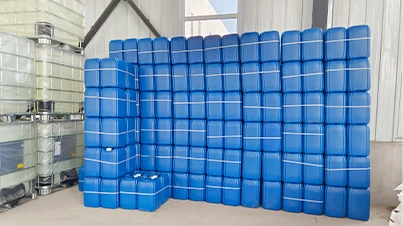scale and corrosion inhibitor
Understanding Scale and Corrosion Inhibitors in Industrial Applications
In the realms of industrial processes, particularly within sectors such as oil and gas, power generation, and water treatment, scale and corrosion represent two of the most pervasive challenges that operators must contend with. The implications of these issues are far-reaching, including reduced efficiency, increased maintenance costs, equipment failure, and ultimately, unplanned downtime. In this context, the use of scale and corrosion inhibitors has emerged as a crucial strategy for maintaining the integrity and efficiency of industrial systems.
Scale Formation An Overview
Scale refers to the hard, mineral deposits that form on the surfaces of equipment and piping. This phenomenon typically occurs as a result of temperature fluctuations, pressure changes, and the presence of dissolved minerals in water, such as calcium and magnesium. When water is heated or evaporated, these minerals can precipitate out, leading to the formation of scale that accumulates over time.
Common scaling agents include calcium carbonate, calcium sulfate, and silica. The presence of scale can significantly hinder the heat transfer efficiency of heat exchangers and boilers, leading to increased energy consumption and operational costs. Moreover, scale buildup can reduce the flow capacity of pipes, potentially causing pressure drops and facilitating process inefficiencies.
Corrosion A Persistent Threat
Corrosion, on the other hand, refers to the gradual degradation of material, typically metals, due to chemical reactions with their environment. This can occur through various mechanisms, such as electrochemical reactions, oxidation, or environmental exposure to corrosive agents like acids and salts. The consequences of corrosion can be dire, leading to compromised structural integrity, leaks, and in extreme cases, catastrophic failures.
The economic impacts of corrosion are substantial, with estimates suggesting that it costs industries billions of dollars annually in repair, replacement, and lost production. To combat these threats, industries must strategically implement measures to control both scale and corrosion.
The Role of Inhibitors
Scale and corrosion inhibitors are chemical compounds used to mitigate these issues in industrial systems. These inhibitors work by interfering with the crystallization process of scale-forming minerals or by forming protective films on metal surfaces to inhibit corrosion.
Types of Scale Inhibitors
Several types of scale inhibitors are available, including
1. Threshold Inhibitors These compounds reduce the rate of scale formation without precipitating themselves. They work by altering the surface properties of the scale-forming crystals, preventing them from adhering to surfaces.
scale and corrosion inhibitor

2. Dispersants These help keep small particles suspended in solution, preventing them from forming larger aggregates that contribute to scaling.
3. Sequestrants Sequestrants bind to metal ions in solution, reducing their availability to react and form scale.
Corrosion Inhibitors Essential Varieties
Corrosion inhibitors can be classified into several categories
1. Anodic Inhibitors These compounds shift the electrochemical reactions occurring at the anode, slowing down the oxidation of metal.
2. Cathodic Inhibitors By affecting the cathodic reaction, these inhibitors can reduce the rate of corrosion.
3. Mixed Inhibitors These impact both anodic and cathodic processes, providing a more comprehensive approach to corrosion protection.
4. Organic Inhibitors Many organic compounds can adsorb onto metal surfaces, forming protective layers.
The Importance of Monitoring
Effective use of scale and corrosion inhibitors requires careful monitoring of water chemistry and system performance. Regular testing can provide insights into the concentrations of inhibitors required and help identify potential scaling and corrosion issues before they escalate into major problems.
Conclusion
Scale and corrosion inhibitors play an indispensable role in preserving the efficiency and longevity of industrial systems. By understanding their mechanisms and types, industries can adopt tailored solutions to mitigate the adverse impacts of these phenomena. As technology advances and more effective inhibitors are developed, the future of industrial maintenance looks promising, with the potential for enhanced performance and reduced operational costs in various sectors. Ensuring that proper inhibitor usage is part of maintenance protocols will ultimately lead to a more sustainable and efficient operational environment.
-
lk-319-special-scale-and-corrosion-inhibitor-for-steel-plants-advanced-solutions-for-industrial-water-systemsNewsAug.22,2025
-
flocculant-water-treatment-essential-chemical-solutions-for-purification-processesNewsAug.22,2025
-
isothiazolinones-versatile-microbial-control-agents-for-industrial-and-consumer-applicationsNewsAug.22,2025
-
scale-inhibitor-key-solutions-for-water-system-scale-preventionNewsAug.22,2025
-
organophosphonates-versatile-scale-inhibitors-for-industrial-water-systemsNewsAug.22,2025
-
scale-and-corrosion-inhibitor-essential-chemical-solutions-for-water-system-maintenanceNewsAug.22,2025





